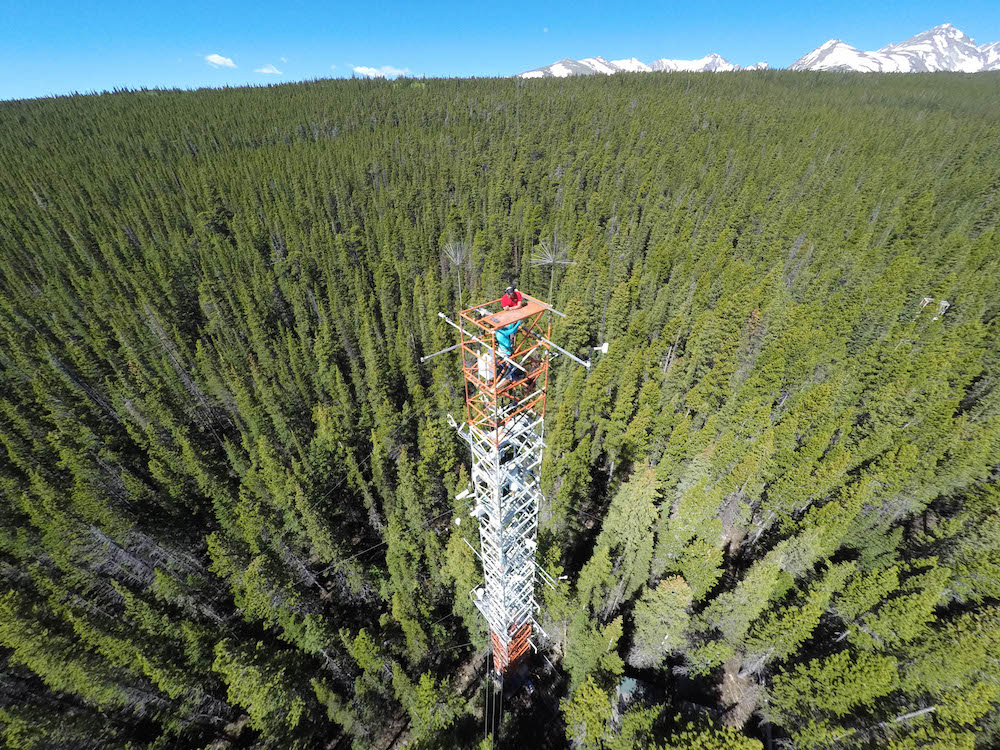Current and recent research projects
Seasonality of ecosystem processes in seasonally snow-covered forests
Climate warming is changing the nature of seasonal snow cover: the length of the snow‐free season is increasing, spring snowmelt and runoff occur earlier, and a greater fraction of winter and spring precipitation falls as rain rather than snow. Seasonal snow cover is an important controller of ecosystem processes, and as climate changes there will almost certainly be important changes to those processes. We are working at in several forests in Utah and Colorado to understand the processes that control seasonal changes in activity and dormancy in temperate conifer forests. With colleagues from the University of Innsbruck, we are also using a global dataset of flux tower observations to examine the influence of seasonal snow cover on the carbon and water cycles. This work is funded by US Dept. of Energy and NASA.
Forest-atmosphere carbon dioxide exchange
Much of our work is focused on carbon cycling in ecosystems of the western US. We are examining the dynamics of ecosystem atmosphere exchange of stable isotopes of CO2 at a coniferous subalpine forest in Colorado (Niwot Ridge AmeriFlux Site). We are using state of the art instrumentation (tunable diode laser absorption spectrometry) to measure carbon or oxygen isotope ratios of atmospheric CO2 at several locations in the forest every few minutes. This approach is allowing us to examine how carbon moves within and between various ecosystem pools (both living and dead), as well as physical transport processes such as diffusion and advection. These data are critical to understanding the carbon cycle at spatial scales from leaf and soil to globe, and provide substantial insight into ecosystem carbon cycle processes across these scales. Data from this project can be obtained here. This work is funded by US Dept. of Energy.
Water sources and transpiration of riparian and montane trees
In water-limited areas of the western US, it's not always clear where plants get their water or how and when that water arrives at the site. Much of the precipitation in this region falls as winter snow, which recharges soil moisture, streams, and groundwater when it melts. Plants are most active in the warm season, decoupled in time and sometimes in space from precipitation. We are investigating the spatiotemporal dynamics of plant transpiration and various plant water sources in this context. This work is funded in part by the US National Science Foundation.
Snow and stream water quality in urbanizing regions of the west
It's an indisputable fact that Utah has the "Greatest Snow on Earth", but snow actually contains a wide variety of chemical compounds that are deposited to the land surface. As part of the iUTAH project we have been studying the fate and ecosystem consequences of ionic compounds in precipitation once it hits the land surface. This involves a focus on terrestrial and stream ecosystems of the Wasatch Mountains. This work is funded by the US National Science Foundation.
Here's a related video about research at Red Butte Creek which flows through campus.
Urban trace gas emissions
Cities are tremendous sources of greenhouse gases such as CO2 and CH4 to the atmosphere. We are working with colleagues in Biology and Atmospheric Sciences to directly monitor emissions of these climate-relevant gases in Salt Lake City and surrounding cities. This includes a network of stationary monitoring stations and instrumentation located on the Utah Transit Authority's light rail (TRAX) system. This work is funded by the US National Oceanic and Atmospheric Administration.

